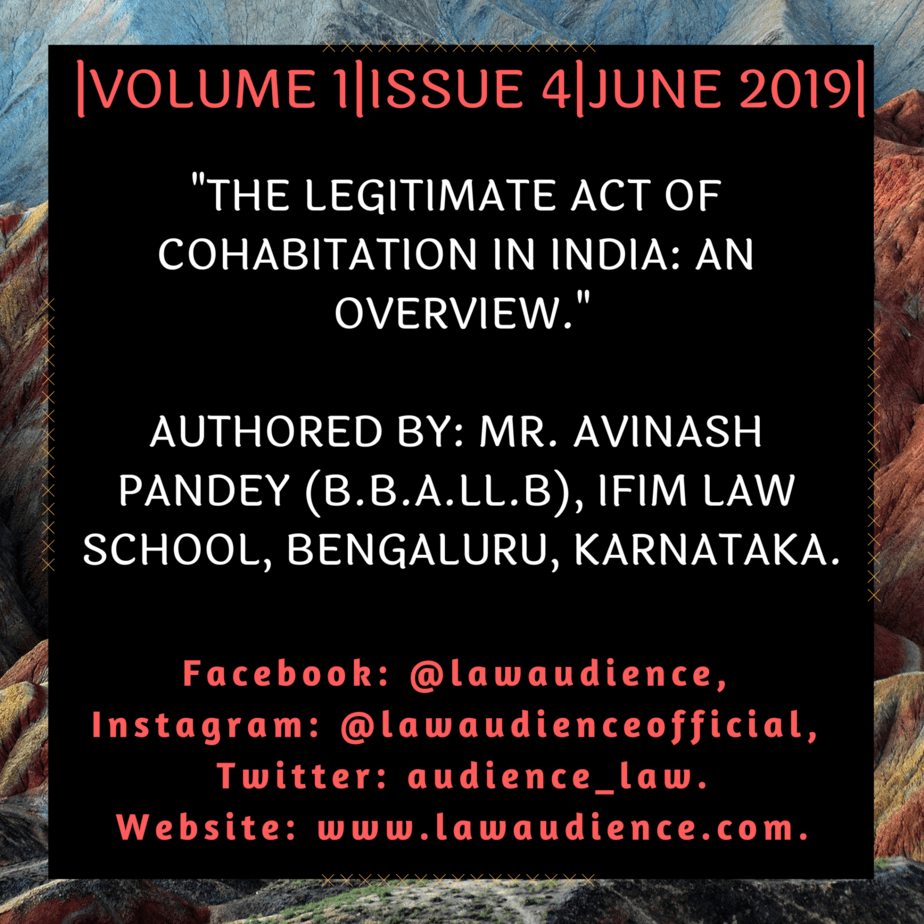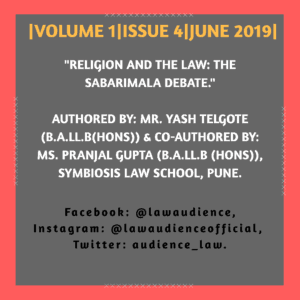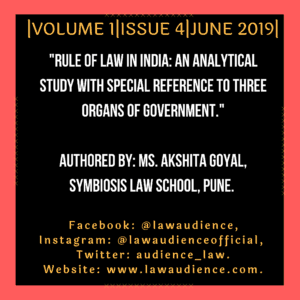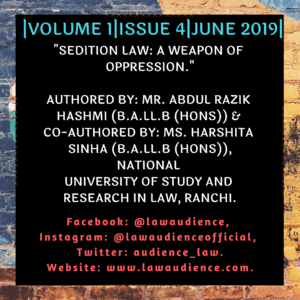Authored By: Mr. Avinash Pandey (B.B.A.LL.B), Ifim Law School, Bengaluru, Karnataka,
I. ABSTRACT:
“The theory of wedlock has consistently emerged with a span of time. With the so-called Traditional civilization and mankind psychology, the idea of matrimony and relationship has also grown. The forthcoming generations are recognising relations regularly more liberally. Thus, one of the most moderate notions of Live-in relationship has been chosen by various people around the globe. This is a tie in the reality of a wedding but unlike a wedding. This idea has gradually flagged its way in the Indian community as well. Nevertheless, such bonds have deemed a ban in Indian culture. Although the Hon’ble Apex Court[1] has ordered that any duo living mutually for a prolonged time will be considered as lawfully wedded.”
Keywords: Traditional, Matrimony, Community, Relationship.
II. COMPREHENSIVE RESEARCH ON LIVE-IN RELATIONSHIP:
There has been an ample boost in the number of duos living mutually without a union of marriage between them over the past few years. Live-in relationship to be recognised in easy terms is a settlement between an unmarried pair to live mutually without the responsibilities and commitments of a matrimonial relationship. Nowadays, the large numbers of couples are choosing Live-in relationship over marriage because it provides ample time to both the partners to understand their perspective as well as to act according to their expectations which will satisfy both of them. Consequently, it becomes remarkably unavoidable to understand the statutory status of such a relation in India.
Recognizing the distinct culture in India, several statutes have been constructed which lay down the methods and guidelines for the decent accomplishment of matrimonies in numerous religions. Marriage laws have been drafted to provide assistance for conflicts occurring out of matrimony in diverse Community. There is no constitutional interpretation of Live-in relationship and accordingly, the statutory standing of such type of relations is also uncorroborated. The Indian government does not grant any powers or responsibilities on the individuals who are engaged in Live-in relationship.
The situation of the children born during such a relationship is also unclear and consequently[2], the court has presented an explanation to the notion of Live-in relationships through multiple decisions. The court has generously declared that any man and women cohabiting for a prolonged time will be considered as legitimately married[3], unless declared divergent. According to the court if any of the partners have engaged in the Live-in relationship only with the object of sexual reasons, then it would not be legitimate to challenge for the advantages of a constitutional wedding[4]. The core idea behind the live-in relationship is to strengthen the mutual understanding between them and also according to many, marriage is considered as the private matter which cannot be influenced by spiritual and administrative institutions.
III. A WORLDWIDE VIEWPOINT ON COHABITATION:
a) CANADA:
Meanwhile, in Canada, Live-in relationship is formally accepted as “general law matrimony”. In a number of matters, the national law of the nation allows common-law pairs the equivalent benefits as wedded duos.
In Canada, if any couple is existing in the unmarried relationship from the last 12 months or delivered a baby or adopted then they will be identified as a legitimate pair[5].
b) UNITED KINGDOM:
As per the United Kingdom authorities, In the event the couple chooses to leave each other, the courts do not have the constitutional authority to reverse that settlement.
If a Live-in relationship partner separates, the tribunals have no jurisdiction to reverse the severe constitutional holding of wealth & distribute it as they may do on division. Cohabiting pairs are administered as unrelated people for tax levying goals[6].
c) AUSTRALIA:
As per The Australian Laws, if two people have a relationship mutually as a pair & they are prevailing collectively on a genuine internal basis, they are ordinarily recognised to be in a de-facto relationship[7].
IV. INDIAN COURT’S APPROACH TOWARDS THE CONCEPT OF LIVE-IN RELATIONSHIP:
In the case of Payal Sharma Alias Kamla Sharma vs. Superintendent, Nari Niketan, Agra and Ors[8] The Hon’ble court held that, “the person who age is above 18 can live with the full liberty as per the constitutional right, he/she can go everywhere with anyone. In our view, a male and a female, even without getting coupled can remain mutually if they crave. This could be considered unethical by the community but it is not unconstitutional. There is a disagreement between law and morality”.
In the case of Tulsa & Ors vs. Durghatiya & Ors[9] The Hon’ble court clearly stated that, “Under sec 114 of Indian Evidence Act the court may presume that if any man & woman are living together from a long time, then they will be considered a couple, unless, the contrast be unquestionably proved that they were existing collectively in importance of a legitimate marriage, and not in a situation of concubinage”.
In the case of Revanasiddappa & Anr. vs. Mallikarjun & Ors[10] The Hon’ble court held that, “Irrespective of the relation within parents, the birth of a baby out of such a relationship has to be seen autonomously of the relationship of the couples. It is as clear and transparent as sunshine that a child born out of such a relationship is inoffensive and is authorised to all the benefits and opportunities available to children born out of legitimate marriages”.
In the case of Reshma Begum W/o Gajanfar Kazi vs. The State of Maharashtra[11]
The Bombay High Court in this case as on 25th July 2018 held that not all Live-in Relationships are covered under the provisions of D.V. Act, 2005.
The Court in Para No. 10 of the Judgement held that:
“Perusal of these decisions makes it abundantly clear that not all the live-in relationships are covered by the provision of Section 2 [f] of the D.V. Act. It is only those which qualify to be the relationship in the nature of marriage which is governed by that provision. In order to constitute such a relationship, a legal marriage between the two must be possible.”
In the case of Indra Sharma vs. V.K.V. Sharma[12], The Hon’ble court held that “a comparison has been made between the relations which are in the nature of marriage and live in relationship and guidelines have been culled out to distinguish between the two”.
Also In the case of Velusamy vs. D. Patchaiammal[13], the relationship in nature of marriage was explained & which means:
- The couple must hold themselves out to society as being akin to spouses.
- They must be of legal age of marry.
- They must be otherwise qualified to enter into a legal marriage, including being unmarried.
- They must have voluntarily cohabited and held themselves out to the world as being akin to spouses for a significant period of time.
V. FAMILY BRUTALITY & LIVE-IN RELATIONSHIPS:
The change came in the year 2005 after the enactment of “Protection of Women From Domestic Violence Act 2005”. The laws which were drafted before 2005 were not all-sufficient to protect women from various cruelties. The large numbers of loopholes including support, different compensations, security orders, sharing homes were faced by the women. The meaning of family violence has been made scattered sufficiently to include all kinds of bodily, sexual, heartfelt & even monetary damage. But the core interesting reformation carried about in this law was the security granted to all woman & children incorporation of those women who are involved in the live-in relationship. The court prohibited a woman in an additional relation entirely without exerting into evidence whether the live-in relation is by preference or by a particular incident. The court has offered no attempt to implement the suggested guidelines in such a relation and the court has clearly ruled out the probability of any kind of security under the Protection of Women from “Domestic Violence Act, 2005” to a lady in such a connection and therefore delivering no attempt to defend the concern of such a woman. Moreover, the court declined to take into attention the “Purpose” of the individuals.
The court hence neglected to take into deliberation a relationship which might satisfy the said guidelines of being a relationship “in the kind of matrimony” but might not have any purpose of being under the conjugal obligation and responsibility at the first position, henceforth it is entirely unethical to confer upon the man any obligation which was apparently not part of the arrangement at the first place.
It is thereby important to say that a lady must be shielded from family violence whether she is in an extramarital relation, a live-in relation or in a conjugal bond but at the same moment it is not relevant to confer an assumption of marriage in a connection which was an avoidance from such responsibilities and commitments at the first place. Consequently, it is essential for the authorities to bring the much-required adjustments in the Security of Women from Domestic Violence Act, 2005.
Furthermore, now that the SC of the nation has identified the foundation of live-in relation formally it is important to make our constitutional circumstances sustainable for such classification of relations and henceforth it is imperative to enact upon the subject of live-in relationship and present reasonable and clear arrangement concerning the benefits and duties of parties connected in such a relationship so as to not disturb such a relationship with wedlock because the two are intrinsically distinctive in nature and hence should be handled uniquely so as to preserve the importance of both the parties in the alliance.
VI. CONCLUSION:
Thus, the constitutional standing of live-in relations in India has been emerged and decided by the SC in its multiple perceptions. Nevertheless, there is no separate enactment which lays down the prerequisites of live-in relationships and provides validity to this theory. Though the theory of live-in relation is deemed unethical by society but is clearly not unconstitutional in the perception of the law[14]. The SC declares that being together is a right to life and accordingly it cannot be considered as unconstitutional[15]. The court has also worked to develop the circumstances of the women and children borne out of live–in relations by determining their standing under the Domestic Violence Act. The government cannot encourage pre-marital sex, though, at occasions, such connections are intensively peculiar and people may express their perspective, for and against. Thus the Parliament has to consider over these points.
Therefore, it is clear from the abovementioned analysis that a live-in relation is not manageable to be known in law as there are various concerns which persist amphibolic, complicated & unaddressed. It is crucial to assume society with its dynamic colours & implement laws which are functional & enforceable to tackle these complicated matters.
[1] Dhannulal And Ors. vs. Ganeshram And Ors, (2015) 12 S.C.C. 301 (India).
[2] S. Khushboo vs. Kanniammal and Anr, (2010) 5 S.C.C. 600 (India).
[3] supra note 1.
[4] D. Velusamy vs. D. Patchaiammal, A.I.R. 2011 S.C. 479 (India).
[5] Unmarried Spouses, clicklaw wikibooks (May. 25, 2019, 10:00 AM), https://wiki.clicklaw.bc.ca/index.php/Unmarried_Spouses.
[6] Cohabitation in the United Kingdom, Wikipedia (May. 25. 2019, 10:10 AM), https://en.wikipedia.org/wiki/Cohabitation_in_the_United_Kingdom.
[7] De Facto Relationship Break Up Entitlements in Australia, amp life limited (May. 25, 2019, 10:15 AM), https://www.amp.com.au/personal/hub/manage-my-money/de-facto-splits.
[8] Manu H.C. 0288 (2001) (India).
[9] A.I.R. S.C.C. 648 (2008) (India).
[10] A.I.R. S.C.C. 12639 (2011) (India).
[11] H.C. 82 (2018) (India).
[12] Indra Sharma vs. V.K.V. Sharma, A.I.R. S.C.C. 309 (2014) (India).
[13] Velusamy vs. D. Patchaiammal, S.C. 764 (2010) (India).
[14] Lata Singh vs. State of U.P, (A.I.R. 2006 S.C. 2522) (India).
[15] supra note 12.



